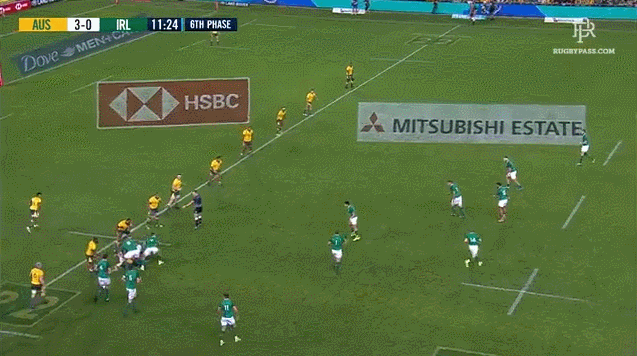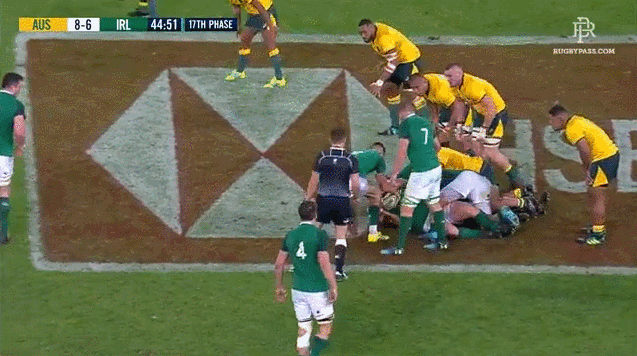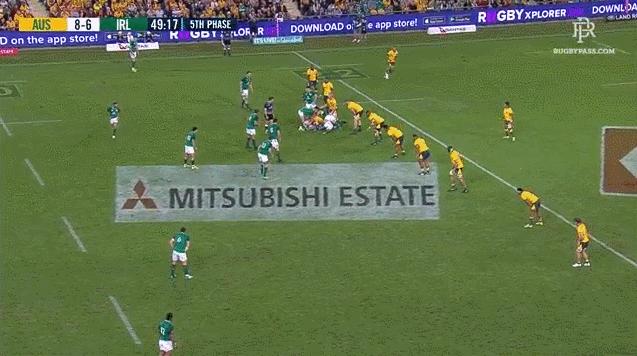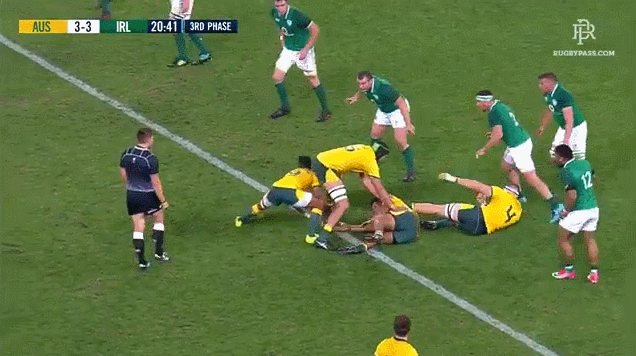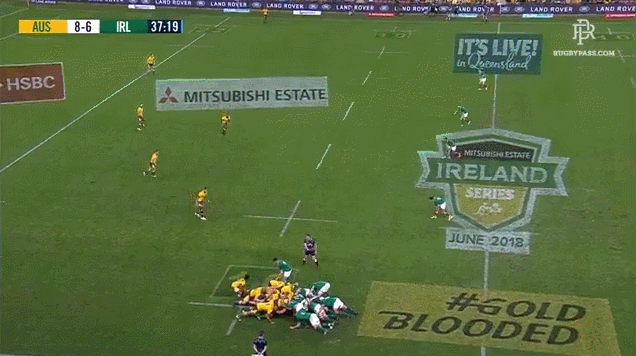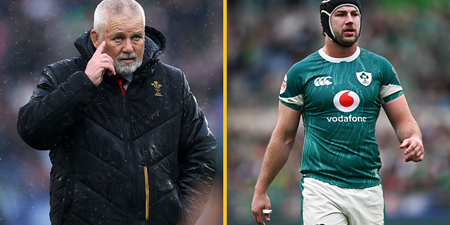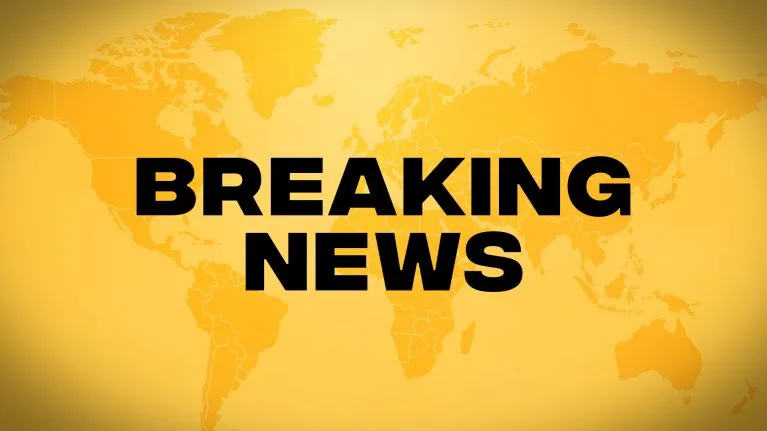Joey Carbery started his first game alongside new clubmate Conor Murray on Saturday as the 22-year-old played 57 minutes in Ireland’s 18-9 loss to Australia.
The opening test in Brisbane marked just the fourth time in the last year that Carbery has started a match at fly-half and he performed admirably given the circumstances and his lack of game time in the position.
The former Leinster utility should stand to improve considerably playing outside scrum-half Conor Murray at Munster next season but how did they fare in their first start together?
Firstly, before assessing each player’s performance against the Wallabies and how both players played together, it’s important to note the type of team that Carbery was playing for.
Ireland averaged 61.6% possession in five Six Nations matches while Murray averaged 108.4 passes per game and 115.75 passes per game against teams that weren’t Italy.
Murray made 99 passes against Australia last weekend compared to Carbery’s 27 passes, which comes in just below Johnny Sexton’s Six Nations average of 31.2 passes per game.
Essentially, Carbery was drafted into a team that generally boasts a significant advantage in possession and where the scrum-half is making 78.6% of the passes for his halves pairing.
The ratio may seem high but it is standard for most teams. Aaron Smith made 74.7% of the passes between him and Beauden Barrett in the All Blacks demolition of France on Saturday while Will Genia made 77.5% of the passes between him and Bernard Foley for the Wallabies at Suncorp Stadium.
Genia and Murray claimed a similar percentage of passes but their teams played with very contrasting styles.
Ireland played a lot of their play off Murray and operated in a very organised structure with Carbery at fly-half where the player could generally pass short to an outside runner or long to a second man behind a decoy runner.
It was a safe gameplan for him and a structure where he was not asked to do too much in what was just his third start at fly-half for Ireland.
The Australian defence was very aware of what Ireland were trying to do in attack and they were quick to shutdown potential overlaps, often, in an overwhelmingly physical manner as Murray and Carbery both discovered.
Carbery played a lot of Saturday’s match within this structure and often leant on inside centre Bundee Aki as a security blanket with the Connacht midfielder making a game high 19 carries.
Ireland would typically use a lot of their forward runners to try get over the gainline while when Carbery received the ball it was generally play the ball short, hit another back wide or bring another player back under to straighten up the attack.
When Carbery had the likes of Robbie Henshaw outside of him the play was relatively simple but the 22-year-old is still adjusting to commanding the backline and he showed an almost instinctive tendency at times to try and take the ball to the line and beat the defence.
It’s hard to go from playing Treviso at fly-half for Leinster to playing the Wallabies with Ireland nearly two months later and Carbery certainly found out the differences between both teams in Brisbane.
Ireland’s best attacking play during the match actually came from the set-piece.
The Irish scrum struggled at times against a much improved Wallabies shove but their was one particular line-out in the first-half that Ireland head coach Joe Schmidt should receive a lot of credit for.
Ireland went with a short line-out near the halfway line with prop Jack McGrath filling in at scrum-half.
McGrath received the ball from the line-out and shifted one pass wide to Jordi Murphy who acted as a link player in the play with the Ulster bound flanker then ignoring Aki as a decoy runner and hitting Murray instead, who also then ignored his decoy option in Robbie Henshaw to go to Carbery.
The young playmaker ignored his decoy option in Rob Kearney and then hits a looping Jacob Stockdale who had a two-on-one situation with Wallabies winger Dane Haylett-Petty.
Aki, Henshaw and Kearney were all strike options on the play below but were all ignored in favour of getting Stockdale the ball in space in the outside channel.
The move ultimately ends with Keith Earls gaining possession on the wing but it’s a play that is indicative of Ireland’s structure under Joe Schmidt in that there’s always a direct option if needed.
Ireland had more carries than Australia (164:120) in the defeat but the Wallabies went to their backline a lot more than the visitors went to their backs.
The Australian backs accounted for 55.8% of their teams total carries compared to the Irish backs who carried 40.8% of their team’s total carries.
Australian inside centre Kurtley Beale was key in this as his long range passing and ability to jump in at first-receiver allowed the hosts to really open up their attack, and in turn, the Irish defence.
Beale’s range of passing ultimately allowed Australia to exploit Ireland out wide as Haylett-Petty and centre Samu Kerevi combined brilliantly to bring the Wallabies towards the try line where Foley pounced to score.
Under Schmidt, Ireland have generally defended quite narrow and this puts an awful lot of pressure on the outside centre and wings to jam in and shut down potential mismatches on the outside.
Ireland winger Jacob Stockdale starts very deep on the play that ultimately leads to the Foley try with Robbie Henshaw relied on by the Irish defence to identify the threat.
Henshaw identifies where the play is developing but he can’t quite get to Foley before he gets the ball out to Marika Koroibete who then shifts the ball to Haylett-Petty before Stockdale can get to him.
Henshaw and Stockdale were caught out in this particular instance, but like any defensive system in rugby, there will be flaws.
Ireland defend up and in under Schmidt and later in the half the Wallabies again looked to attack wide but the play was identified by both Henshaw and substitute Jordan Larmour who both jammed in to shut down the threat.
The Foley-Beale 10-12 axis will certainly test Ireland’s fringe defence over the next two weeks as both players ability to pass the ball wide should put massive pressure on the decision making of the Irish outside backs and their ability to read and react.
Australia also looked to target Ireland in the air with Beale going high towards Israel Folau a number of times throughout the match to look for potential mismatches.
The second Test in Melbourne and the third Test in Sydney should be another great match of styles.
Ireland’s direct and blunt approach verse the Wallabies spatial attack. Possession verse making the most of the ball when you have possession.
The expected reintroduction of Johnny Sexton, Tadhg Furlong, Cian Healy and Dan Leavy to the Irish team should give Schmidt’s side a better chance of success but the styles of both sides should remain the same.
The aggressive Australian defence shut down a lot of Ireland’s forward carries as the visitors’ 60% possession mark was just their second lowest total this year following the England match (46%).
Ireland will need to do a better job at defending in the wider channels against the Wallabies but Joe Schmidt’s side, as they always do, should once again have a lot of the ball.
CJ Stander and Kieran Marmion were both unlucky not to have scored in the first Test loss but there are opportunities there for Ireland. Evidently, they just need to take them.

